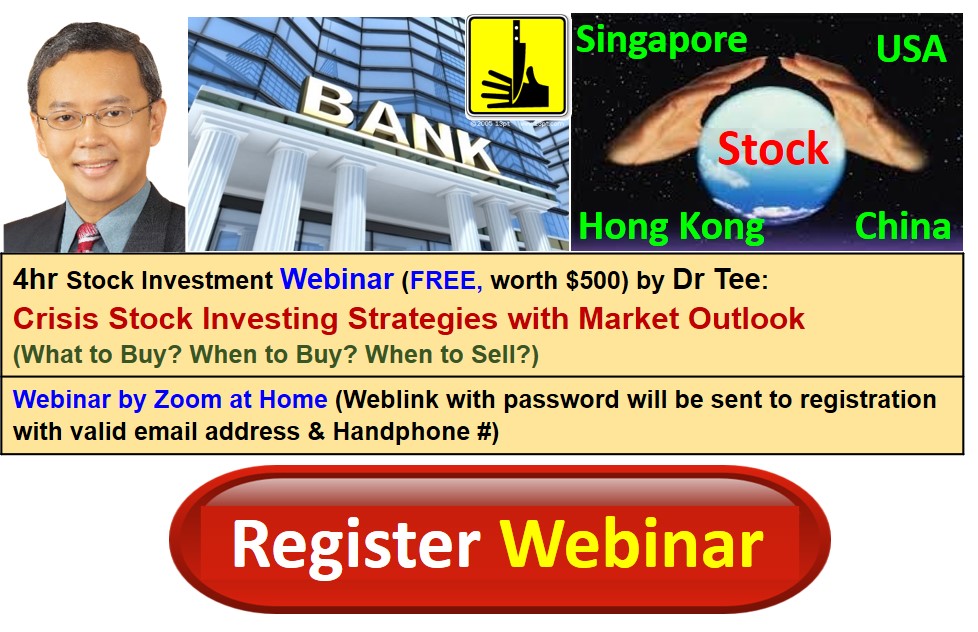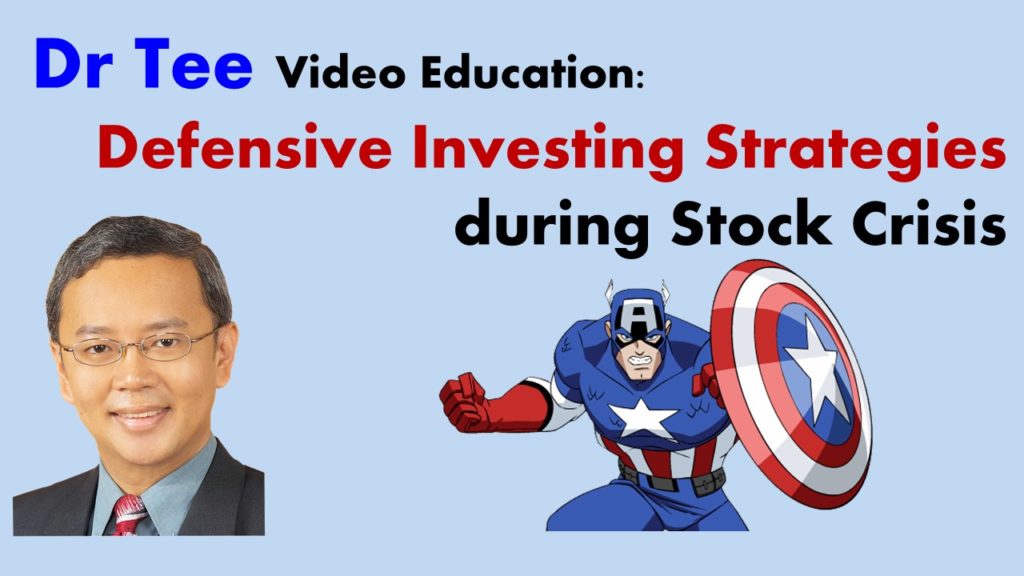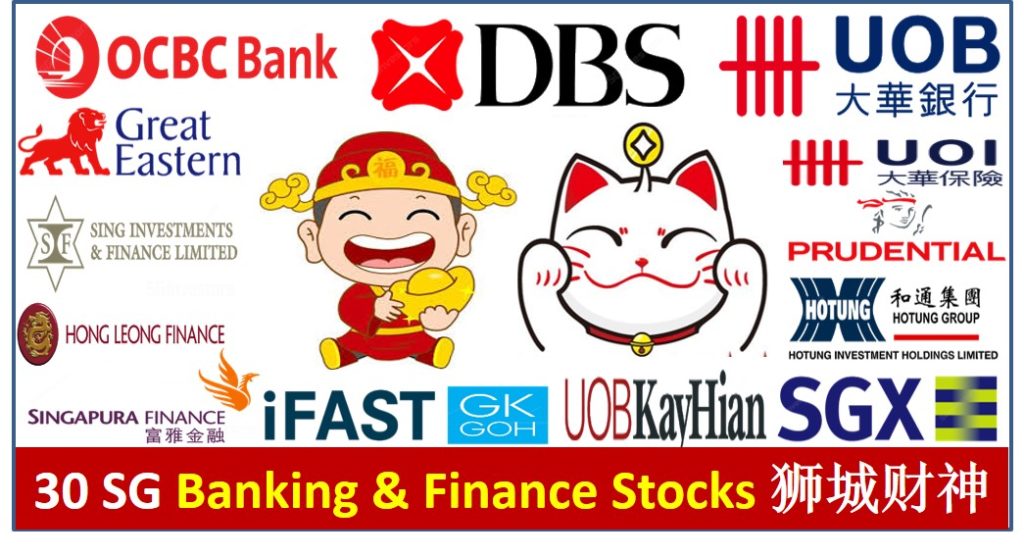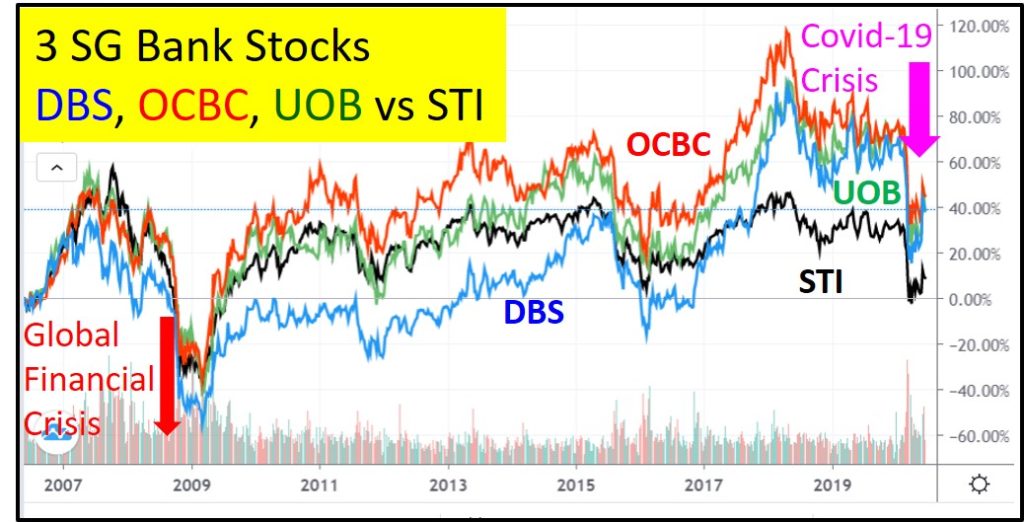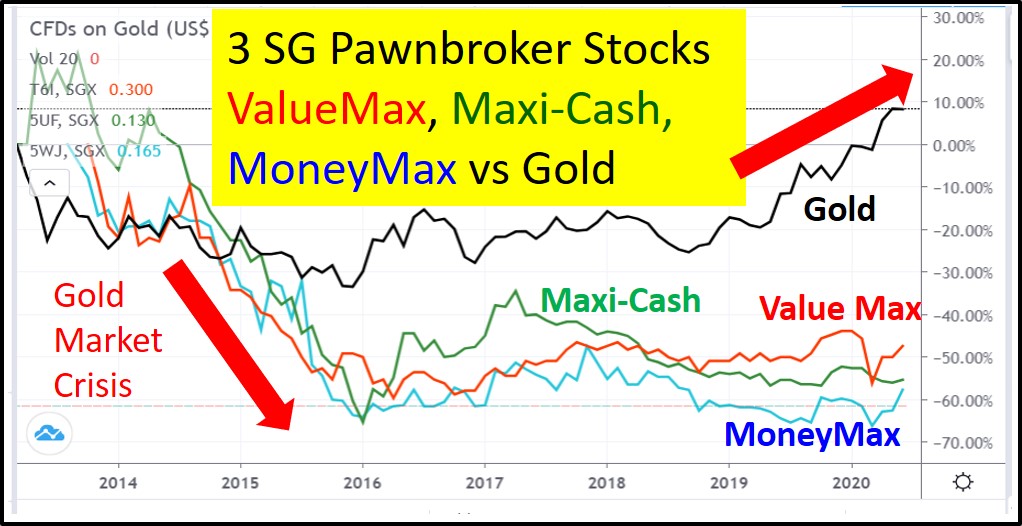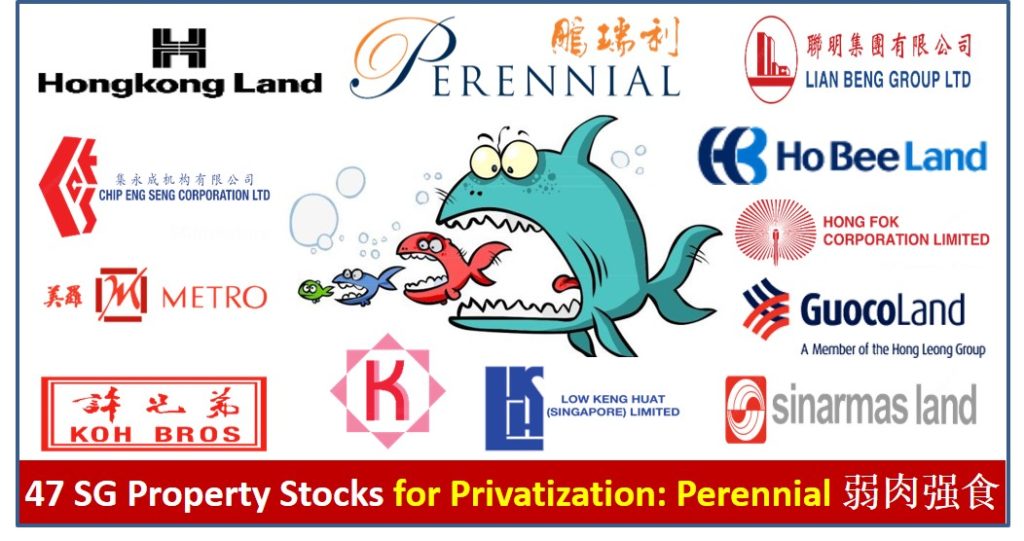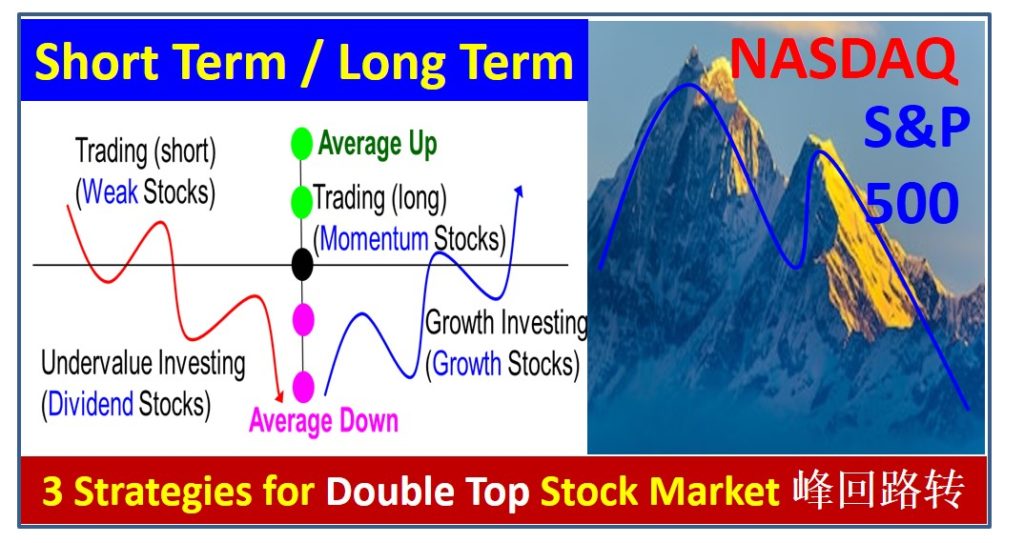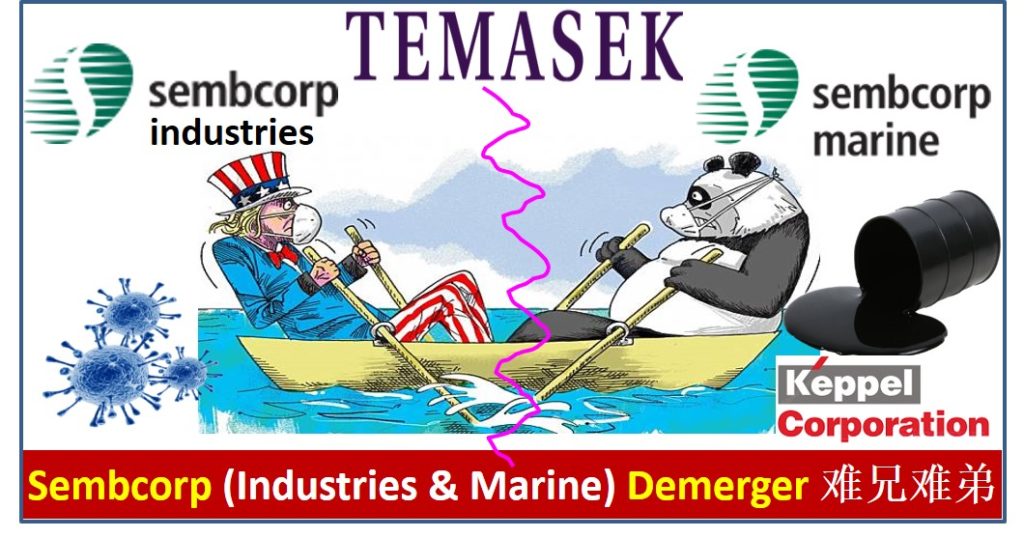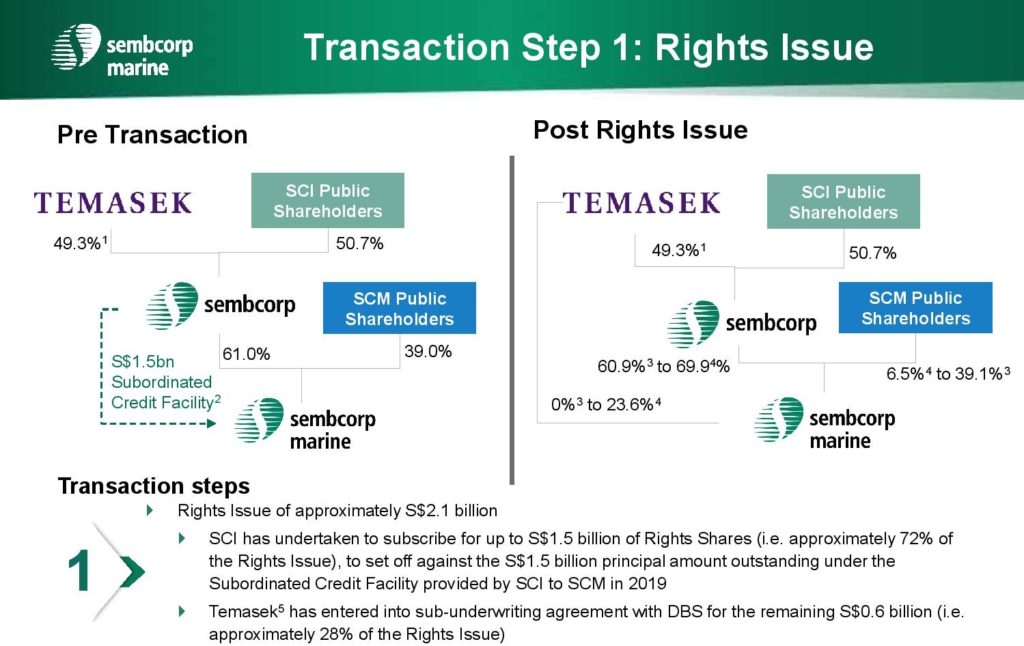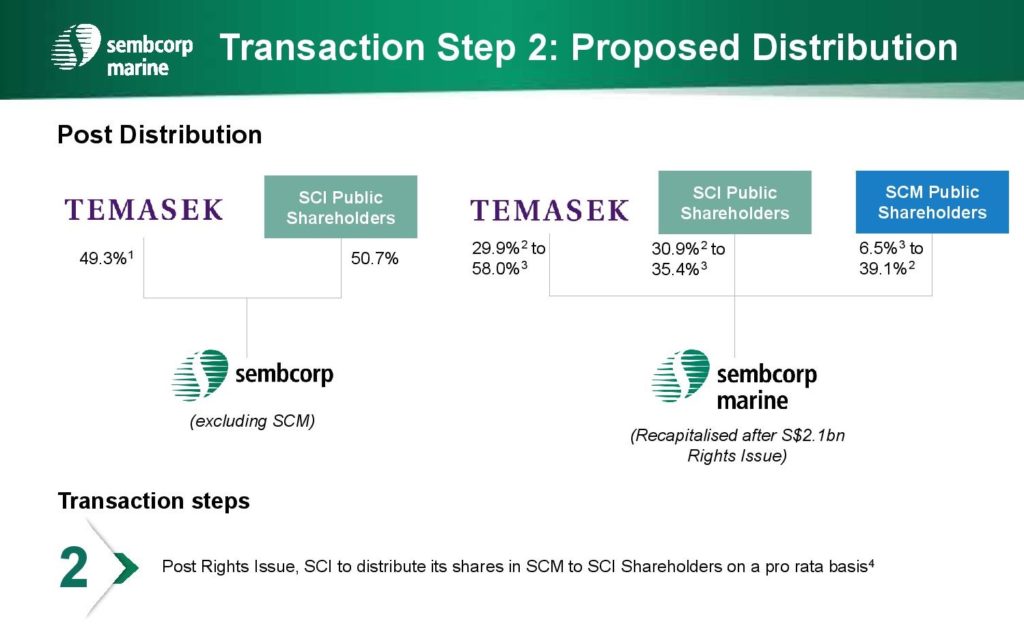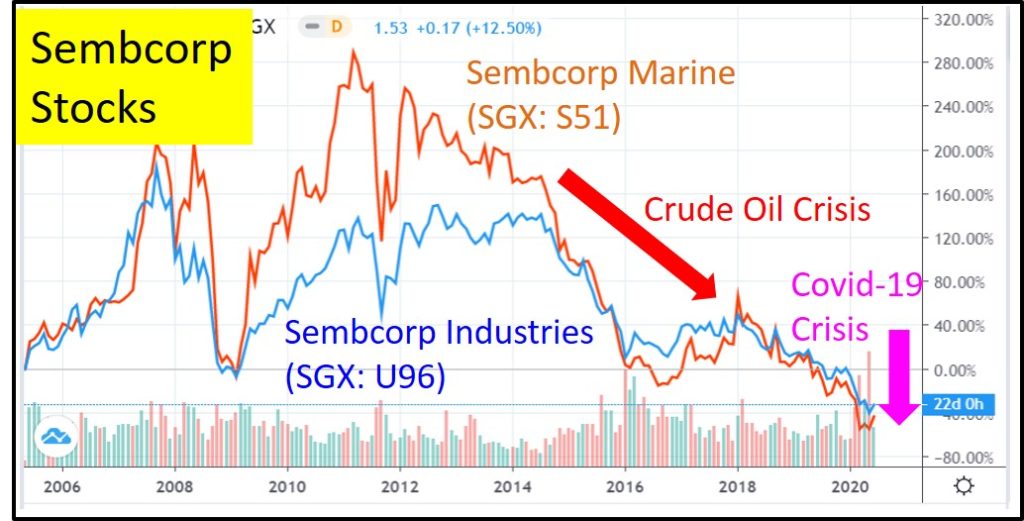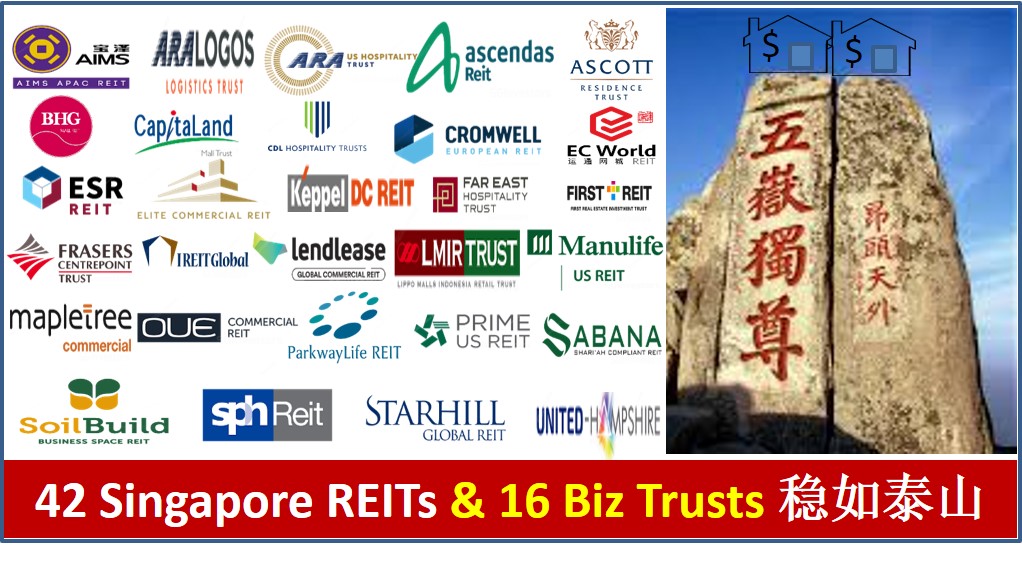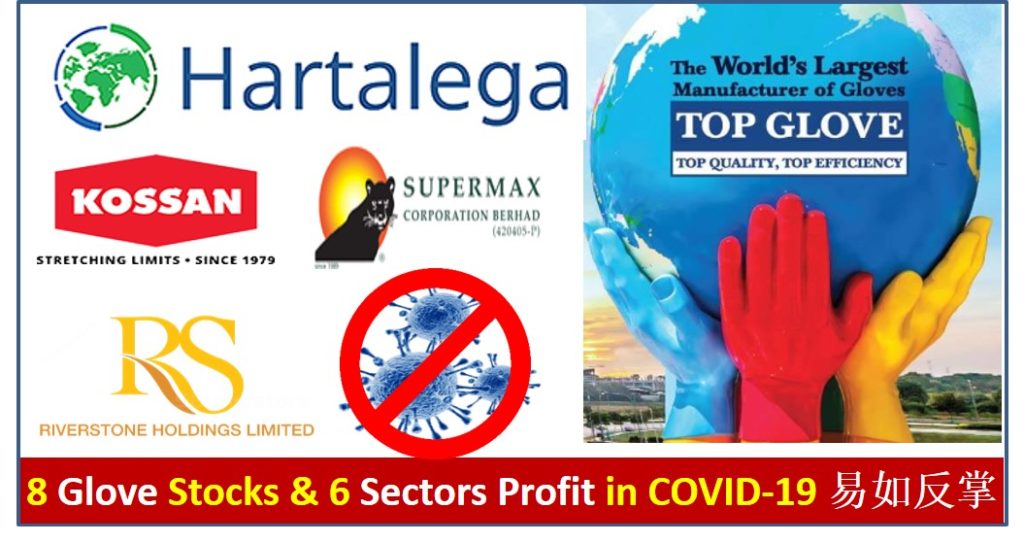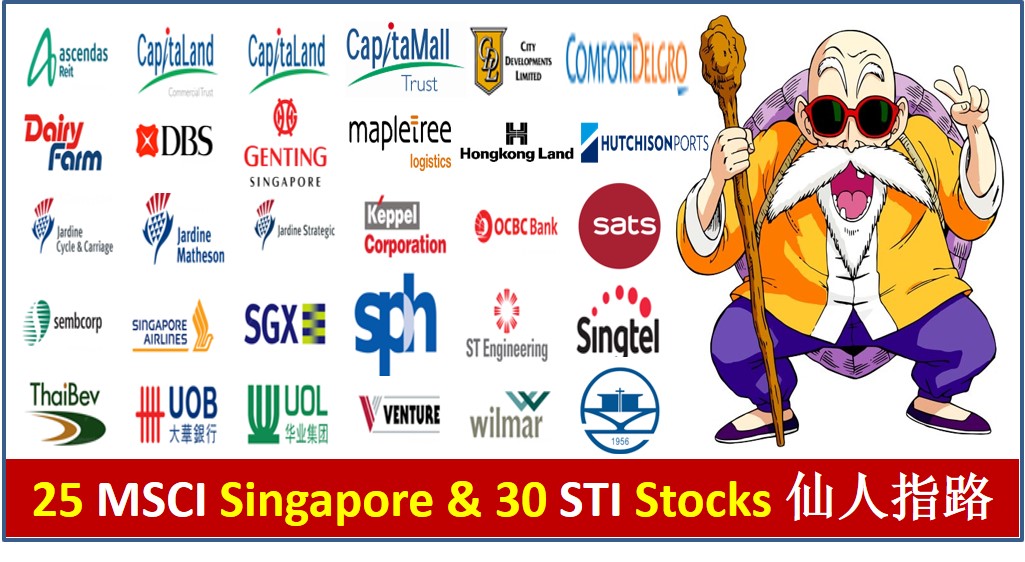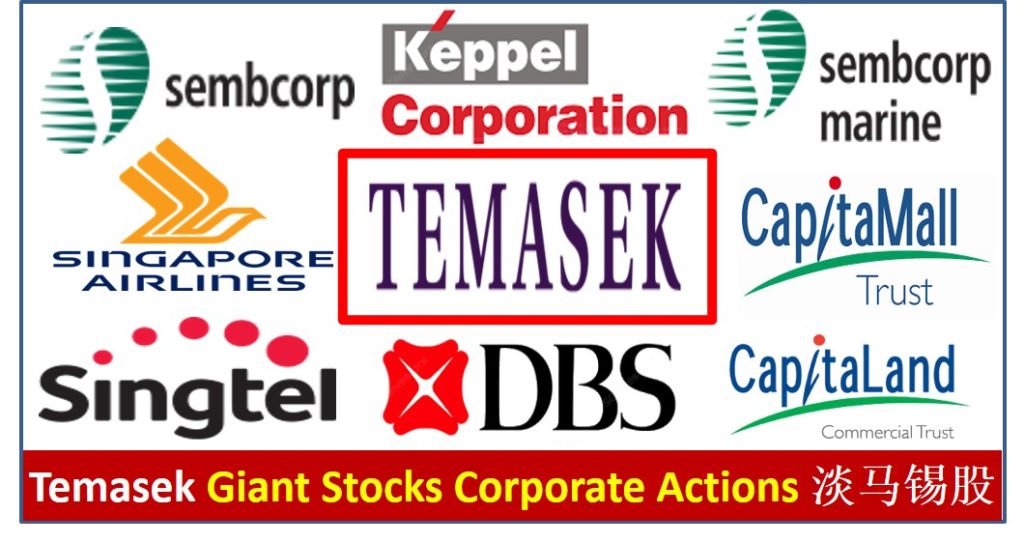
Having a strong sponsor or major shareholder is crucial for stock investment, especially during period of uncertainty such as COVID-19 stock crisis. In this article, Dr Tee will review these 7 Temasek stocks with 4 major corporate actions:
1) Keppel Corp (SGX: BN4)
– Abandon of Partial Acquisition by Temasek
2) Sembcorp Industries (SGX: U96) & Sembcorp Marine (SGX: S51)
– Successful Demerger under Temasek
3) Singapore Airlines, SIA (SGX: C6L)
– Impact of Rights & Bonds Issues for Survival
4) CapitaLand Mall Trust (SGX: C38U) & CapitaLand Commercial Trust (SGX: C61U)
– Merger of CapitaLand (SGX: C31) Giant REITs with coming change in 30 STI component stock with Keppel DC REIT (SGX: AJBU)
Temasek helps to manage national wealth of Singapore, having over 40 stocks globally with about S$300B investment (淡马锡股). There are at least 26 Temasek / GLC stocks in Singapore, controlling shareholder with 15% or more ownership directly or indirectly:
Singtel (SGX: Z74), DBS Bank (SGX: D05), ST Engineering (SGX: S63), Singapore Airlines (SGX: C6L), SIA Engineering (SGX: S59), Singapore Exchange (SGX: S68), SATS (SGX: S58), Sembcorp Industries (SGX: U96), Sembcorp Marine (SGX: S51), Olam (SGX: O32), CapitaLand (SGX: C31), CapitaLand Mall Trust (SGX: C38U), CapitaLand Commercial Trust (SGX: C61U), Ascendas Reit (SGX: A17U), Ascott Hospitality Trust (SGX: HMN), Ascendas Hospitality Trust (SGX: Q1P), CapitaLand Retail China Trust (SGX: AU8U), Ascendas-iTrust (SGX: CY6U), Keppel Corp (SGX: BN4), Keppel Reit (SGX: K71U), Keppel DC Reit (SGX: AJBU), Keppel Infrastructure Trust (SGX: A7RU), Mapletree Logistics Trust (SGX: M44U), Mapletree Commercial Trust (SGX: N2IU), Mapletree Industrial Trust (SGX: ME8U), Mapletree NAC Trust (SGX: RW0U).
Temasek stocks portfolio also affect about 15% of STI index stocks, which has strong impact on Singapore stock market. Here are 30 STI component stocks:
DBS Bank (SGX: D05), Singtel (SGX: Z74), OCBC Bank (SGX: O39), UOB Bank (SGX: U11), Wilmar International (SGX: F34), Jardine Matheson Holdings JMH (SGX: J36), Jardine Strategic Holdings JSH (SGX: J37), Thai Beverage (SGX: Y92), CapitaLand (SGX: C31), Ascendas Reit (SGX: A17U), Singapore Airlines (SGX: C6L), ST Engineering (SGX: S63), Keppel Corp (SGX: BN4), Singapore Exchange (SGX: S68), HongkongLand (SGX: H78), Genting Singapore (SGX: G13), Mapletree Logistics Trust (SGX: M44U), Jardine Cycle & Carriage (SGX: C07), Mapletree Industrial Trust (SGX: ME8U), City Development (SGX: C09), CapitaLand Mall Trust (SGX: C38U), CapitaLand Commercial Trust (SGX: C61U), Mapletree Commercial Trust (SGX: N2IU), Dairy Farm International (SGX: D01), UOL (SGX: U14), Venture Corporation (SGX: V03), YZJ Shipbldg SGD (SGX: BS6), Sembcorp Industries (SGX: U96), SATS (SGX: S58), ComfortDelGro (SGX: C52).
At the same time, over the past 1 year, there are 4 major corporate actions in these Temasek stocks which worth review here.
1) Keppel Corp (SGX: BN4)
– Abandon of Partial Acquisition by Temasek
The partial acquisition offer by Temasek (increase ownership of Keppel Corp to 51% at price of $7.35/share) was initiated before COVID-19 stock crisis. Under this unprecedented health crisis, global stock market suffers 30-50% correction. Therefore, it does not make sense for Temasek to acquire Keppel Corp at premium price before COVID-19 crisis.
Keppel Corp was making loss in Q2/2020, providing an option for Temasek to withdraw the acquisition as cash or capital may be more critical for other Temasek stocks during this period of uncertainty. Temasek could also use the money for other better investment, eg. recently increase stake in BlackRock (NYSE: BLK), a giant fund stock with $4.8B which is clearly stronger than Keppel Corp.
Despite it may be a sound decision for Temasek but other Keppel Corp shareholders could be disappointed with share prices falling below critical $5/share support, nearly last 10 years low. Keppel Corp is mainly supported by property segment of business as Oil & Gas segment has been making losses due to low optimism oil prices.
Keppel Corp stock investor may need to align decision making (sell or hold) with own personality. Current share price is low optimism, it would be “Sell Low”. The situation is different from SIA which is also at low optimism share prices but business is making loss. Keppel Corp still has strong property business while oil & gas has strong potential to recover with rising oil prices (higher demand with fading of COVID-19 threat). It is also an option to copy Temasek action to “Change Horse” (Sell weaker Stock A, Buy stronger Stock B), eg. transferring the capital to invest in stronger giant stocks such as BlackRock. Afterall, not all could be a patient long term investor for Keppel Corp to regain giant stock title as 10 years ago during bullish Oil & Gas sector.
Although with controlling ownership (over 51% shares), it may be easier to implement potential plan for merging of Keppel O&M with Sembcorp Marine but if outcomes are beneficial to both stocks, a major shareholding (21% of Keppel Corp) may be sufficient to initiate this potential corporate action in future.
2) Sembcorp Industries (SGX: U96) & Sembcorp Marine (SGX: S51)
– Successful Demerger under Temasek
With abstain of voting by Sembcorp Industries and Temasek, the demerger during EGM is still successful, partly because there is no strong second major shareholder (less than 1% shareholding), especially for Sembcorp Marine.
Fundamentally, parent company Sembcorp Industries (with more defensive utilities and growing land development businesses) is much stronger than subsidiary Sembcorp Marine (declining Oil & Gas over the past 5 years) but 1/3 overlapping in accounting (revenue) has dragged down the share prices of Sembcorp Industries which is tied with the same boat under Oil & Gas crisis.
Therefore, after demerger, Sembcorp Industries share prices generally move higher while Sembcorp Marine is still at relative low price position. In medium term, Sembcorp Industries would become a “new company” without 1/3 negative Oil & Gas business. In longer term, cyclic Oil & Gas sector could help Sembcorp Marine investors to have higher upside but patience is required. In general, Sembcorp Industries and Sembcorp Marine are 2 very different type of stocks, differences in share prices would be clearer in future.
Again, Sembcorp stocks investors need to make decision (Buy, Hold, Sell, Wait, Shorting), aligning with own unique personality. The world of stock market is large, over 1600 global giant stocks, there may be no need to “fall in love” with a stock for life.
3) Singapore Airlines, SIA (SGX: C6L)
– Impact of Rights & Bonds Issues for Survival
Airlines sectors has been in very critical condition, some airlines (without strong sponsor) even go bankrupt as passengers drop over 90% compare with before COVID-19, business could sustain more than 6 months. Vaccine development may take another 6-12 months before COVID-19 crisis could be over.
Impact on Singapore Airlines could be more severe during pandemic as it does not have domestic flights (Singapore is too small), therefore the Rights and Bonds issues came in right time to ensure the company could survive through the most critical 12 months period, before Singapore Airlines could fly again proudly.
However, even after the corporate action, SIA share prices continue to decline, about half price since the beginning of COVID-19, about 1/3 of peak prices (after adjustment of rights issues). In fact, Singapore Airlines business fundamental has been declining gradually over the past decade, not just during pandemic (sudden dip). This is due to competitive airlines sector which need to provide good services (well known for SIA but at the price of higher cost) at lower price, therefore earnings and profit margin would be affected.
A stock investor needs to carefully select the right industry or sector for investment. During pandemic, healthcare and technology (eg. online / software solution) stocks would have higher chances to recover than airlines stocks. “Buy Low” is reasonable with condition a stock business fundamental is not much affected. It would be a rare opportunity if business of a stock is growing but share prices fall due to fear driven sales during global financial crisis.
4) CapitaLand Mall Trust, CMT (SGX: C38U) & CapitaLand Commercial Trust, CCT (SGX: C61U)
– Merger of CapitaLand (SGX: C31) Giant REITs with coming change in 30 STI component stock with Keppel DC REIT (SGX: AJBU)
CapitaLand is under Temasek portfolio, the 2 giant REITs, CMT and CCT will be merged by end of 2020 to become the third largest REIT in Asia (largest Asian REIT is Link Reit, HKEX: 823). A giant stock may not need to be large in size, internal business strength with strong economic moat is even more crucial.
Merging and demerging are neutral corporate actions, impact depends on the long term plans of major shareholders. Both CMT and CCT are defensive REITs which could generate steady passive incomes (about 5-6% dividend yield, depending on the share prices). However, the growth is slow (but steady), therefore an investor may position as a defender while diversifying capital over a portfolio of other giant stocks including mid-fielders (eg. growth stocks) and strikers (eg. cyclic stocks or momentum stocks).
When CMT and CCT are merged, would form a new stock, CICT with only 1 stock. Therefore, 30 STI index component would invite the next reserve stock, Keppel DC Reit (SGX: AJBU) which is also a REIT but much stronger growth. The best time to buy a growth stock is usually during global stock crisis (eg. COVID-19 pandemic) with great fear in the market but business continues to make money each month.
=====================================
A smart investor may carefully design a portfolio of global giant stocks (defenders, mid-fielders, strikers) while an experienced trader may take action following the trend with S.E.T. (Stop Loss, Entry, Target Prices) in trading plan.
Drop by Dr Tee free 4hr webinar (learning at comfort of home with Zoom) to learn how to position in global giant stocks during COVID-19 stock crisis with 10 unique stock investing strategies, knowing What to Buy, When to Buy/Sell.
Zoom will be started 30 min before event, bonus talk (Q&A on any investment topics from readers) for early birds. There are many topics we will cover in this 4hr webinar, Dr Tee can have more time for Q&A if you could stay later after the webinar.
Dr Tee will cover over 20 case studies, Singapore giant stocks, eg. CapitaLand Mall Trust (SGX: C38U), Singapore Exchange (SGX: S68), Keppel Corp (SGX: BN4), Top Glove (SGX: BVA), Jardine Matheson Holdings JMH (SGX: J36), Vicom (SGX: WJP) and many others, Malaysia giant stocks, Hong Kong giant stocks and US giant stocks, both long term investing and short term trading.
There are limited tickets left for this 4hr free webinar, please ensure 100% you could join when register: www.ein55.com
